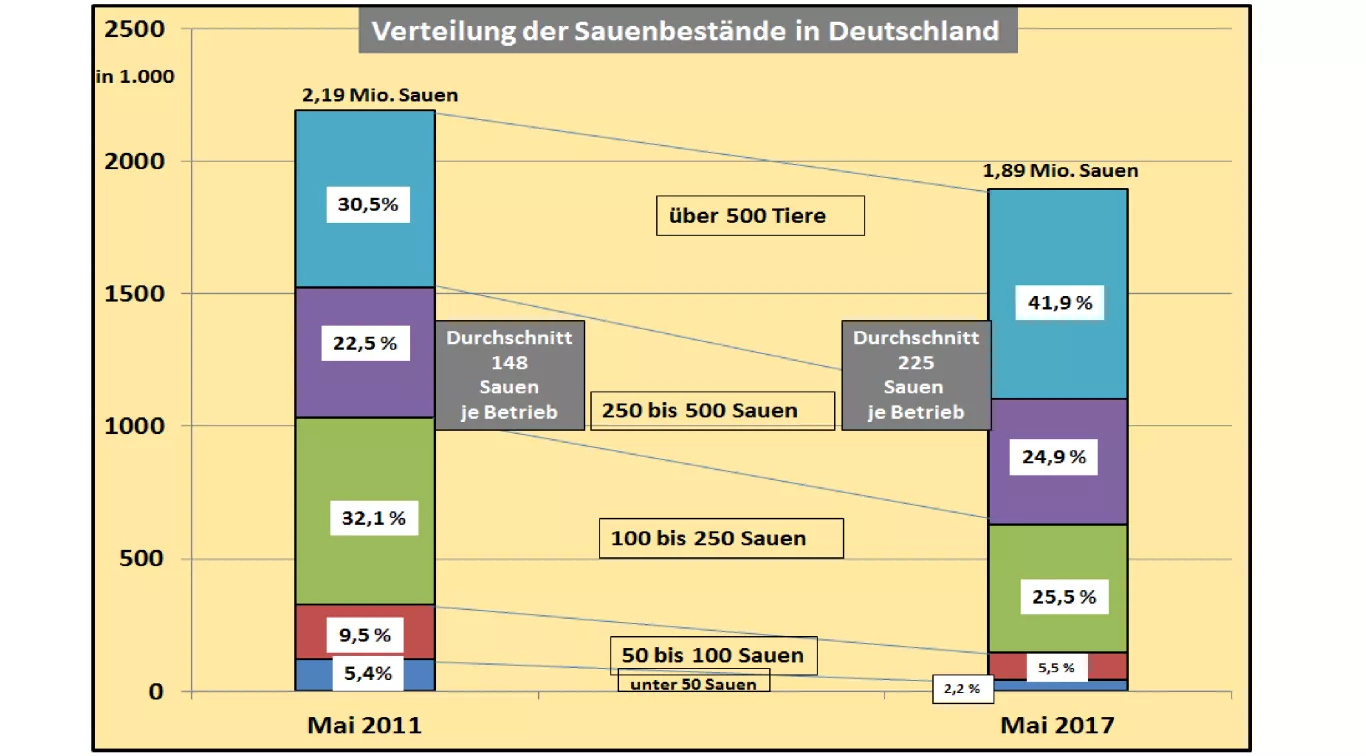Significant structural changes in the sowing habit The labor-intensive sowing habit was formerly regarded as the domain of the family farms. The latest evaluations of the cattle survey of May 3, 2017, however, are now showing a completely different picture of the production structure of piglet production in Germany. The number of pigs has fallen from 2.2 million animals in 2011 to 1.89 million in May 2017. In spite of increasing fermentations per sow and year, the German capacity for piglet production does not suffice to cover the local requirements. Germany imports approx. 12 million piglets or approx. 18% of the offspring requirement. The number of sows has increased from 14,800 to 8,400 resp. -45% - as in the total number of pigs. The average stock of sows has risen from 148 to 225 animals per stock. In the case of a middle mechanization stage, a working force is thus well utilized. A particularly sharp drop of more than 60% is observed in the sows of less than 50 animals . From the previous 5,500 in 2011 there are 2017 only approx. 2,000 plants in this stock size class. The next group of sows from 50 to 100 sows has halved from 2,800 to 1,400 farms. Also in the stock size class of 100 to 250 sows a shrinking process from 4.400 to 2,900 plants took place.Only in the upper groups is a certain stabilization of the operating figures to be determined. In the study of the numbers of sows , one finds in the group of sows under 100 animals per holding instead of approx. 15% still in 2011 now only 7.7% . Roughly 42% of the sows are today in operating units above 500 sows . Ascending trend. The demand of the farmers for larger uniform piglets with the corresponding price increases favors the larger sows. From a regional point of view, most of the breeding animals in Lower Saxony are 25% and in NRW 22% of the German sow population. In Bavaria it is only 12.5% and in Baden-Württemberg still 7.5% is reached.The southern German countries were formerly times surplus areas, today the own requirements can not be completely covered. The average population size in the new federal states is traditionally over 1,000 sows. At the top is Saxony-Anhalt with an average of approx. 1,400 animals per holding. In Lower Saxony, 240 sows were counted in the mean and in NRW one reaches 205 sows in the average stock. In Bavaria and Baden-Württemberg , an average of just over 100 sows per farm is achieved. The background is the small-scale agricultural structure with comparatively high greenland shares. The main driving factor for the strong increase in inventory size is the cost degression of larger units .High construction, environmental protection and livestock housing are relatively easier to organize in large stands than in small units. In addition to this, there are still performance-enhancing specialization effects during work completion as well as continuous productivity increases via nursing. The higher the runs, the larger the remaining stock sizes.


